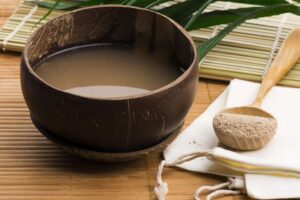
January rolls in with a wave of resolutions and aspirations, including the challenge of Dry January for many. But what exactly is Dry January? It’s a public health campaign urging people to abstain from alcohol for the year’s first month. Initially, it might seem like a test of willpower, but it’s a journey towards healthier habits and self-discovery. As we delve into this topic, we’ll explore the hurdles one might face and the strategies to leap over them gracefully. Embracing the principles of Dry January benefits, Dryish January, and Mindful Drinking, this journey can be transformative and enlightening.
Understanding the Benefits of Dry January
Before we tackle the challenges, let’s understand why thousands participate in Dryish January every year. The benefits are manifold: improved sleep quality, increased energy levels, potential weight loss, and a significant reduction in alcohol consumption even months after January. This month-long pause from alcohol can also offer deeper insights into our drinking patterns, helping us understand why, when, and how much we drink. It’s a fleeting challenge and a stepping stone to a healthier lifestyle.
5 Common Challenges During Dry January
Social Pressure and Events
One of the toughest hurdles in Dry January is navigating social situations where alcohol is a centerpiece. Whether it’s a friend’s birthday party or just casual drinks with colleagues, the expectation to join in the drinking can be overwhelming.
Strategies to Overcome
Mindful Drinking: This is about being conscious of your drinking habits. It involves savoring each sip and understanding the effects of alcohol on your body and mind. When you’re mindful, you’re better equipped to resist peer pressure.
-Alternative Activities: Propose or seek out social gatherings that don’t center around alcohol. Think movie nights, outdoor adventures, or game evenings. These activities can be equally, if not more, enjoyable and help shift the focus away from drinking.
Habitual Drinking
For many, a drink after work or during social events is a deep-rooted habit. Dryish January challenges this routine, making it a tricky habit to break.
Tips for Breaking the Habit
Finding New Routines: Replace your usual drinking time with something else. This could be a new hobby, exercise, or relaxing tea ritual. The idea is to fill the gap left by alcohol with something positive.
Dryish January: This is a less strict version of Dry January. If going completely dry seems daunting, start with reducing your intake. It’s about progress, not perfection. This approach can be less intimidating and a more sustainable way to alter your drinking habits.
Embarking on a Dry January journey is not just about abstaining from alcohol; it’s about re-evaluating and reshaping your relationship with it. With the right mindset and strategies, this challenge can be a rewarding and enlightening experience.
Dealing with Cravings
Cravings can be a formidable opponent in Dry January. They often strike unexpectedly and can be intense, especially for regular drinkers. Understanding that cravings are a natural response to a sudden change in habit is key.
Methods to Manage Cravings
Mindful Drinking Techniques: When a craving hits, pause and reflect on its source. Is it emotional, habitual, or social? Acknowledge the craving without acting on it and let it pass.
Seeking Support: Reach out to friends, family, or online communities participating in Dry January. Sharing experiences and strategies can be incredibly supportive and motivating.
Boredom and Finding Alternatives
With alcohol off the table, some might find themselves at a loss for how to spend their free time. This void, however, presents an opportunity for exploration and self-discovery.
Ideas for Alternative Activities and Hobbies
Explore New Interests: This is the perfect time to dive into hobbies or activities you’ve been curious about. Whether painting, coding, cooking, or hiking, pursuing new interests can be fulfilling and distracting from cravings.
Embrace Relaxation: Consider activities that promote relaxation and mindfulness, such as yoga, meditation, or reading. These can help in managing stress, a common trigger for alcohol consumption.
Doubting the Process
It’s normal to question whether abstaining from alcohol for a month is truly beneficial, especially when facing challenges. However, remembering the reasons for starting this journey can help stay the course.
Reflect on Benefits: Regularly remind yourself of the health and mental benefits you’re striving for.
Track Progress: Keeping a journal or using an app to track progress can provide a tangible sense of accomplishment and motivate you.
Conclusion
Dry January is more than just a month without alcohol; it’s an opportunity for personal growth and developing healthier habits. The challenges, while real and sometimes tough, are stepping stones towards a more mindful and healthier relationship with alcohol. By understanding and implementing strategies to overcome these hurdles, you can make the most of this experience, potentially transforming your lifestyle beyond just the first month of the year. Remember, the journey of Dry January is as rewarding as you make it, and every step towards mindful drinking is a step towards a healthier you.

